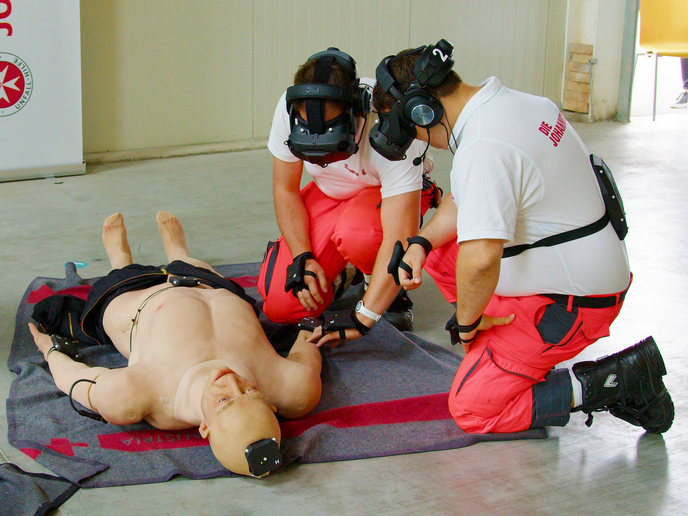Mixed reality training for medical first responders
Medical first responders (MFRs) provide critical care in emergencies, often arriving at the scene before anyone else. Their quick, decisive actions can mean the difference between life and death, as they stabilise patients, administer essential medical treatments and prepare them for transport to medical facilities. MFRs have been trained to handle a wide range of challenging situations and must be able to perform under immense pressure. Traditional training often lacks the realism required to fully prepare personnel for unpredictable, large-scale emergencies. In many instances, the use of live volunteers or manikins is not feasible, particularly when vulnerable groups, such as children and the elderly, are involved.
Mixed reality training platform
The key objective of the EU-funded MED1stMR project was to transform the training of MFRs with mixed reality technology. “We designed an innovative, immersive training platform to simulate real-world situations and prepare MFRs in decision-making and medical skills in emergencies,” explains project coordinator Helmut Schrom-Feiertag. The platform integrates high-fidelity patient-simulation manikins, combined with virtual environments that mimic complex emergency scenarios. These scenarios can be tailored to simulate environments that would be impossible to recreate in traditional training settings, such as mass casualty incidents involving children, tunnel collapses or terrorist attacks. The adaptability of these scenarios offers unparalleled flexibility in preparing responders for a wide range of emergency situations.
Real-time monitoring of trainees
The MED1stMR platform stands out as it combines physiological signal monitoring of MFRs during training. Trainees wear specialised sensors that collect data on heart rate variability and electrodermal activity, which are indicators of stress. Through a real-time stress visualisation feature, trainers can observe and assess trainees' stress responses, allowing them to gain valuable insights and provide more effective guidance. By training under these conditions, MFRs are better prepared to handle the psychological and physiological demands of real-world emergencies. Instructors can also adjust training scenarios based on a trainee’s stress response, providing a highly personalised learning experience. “The incorporation of haptic equipment enables trainees to interact with physical objects, enhancing their sense of immersion and promoting direct learning effects,” adds Ronny Tobler, representative of Refense AG in Switzerland.
AI-driven performance evaluation
In addition to physiological monitoring, the MED1stMR platform offers a sophisticated AI-powered performance evaluation tool that assesses a trainee’s decision-making and medical response during high-stress simulations. This kind of evaluation offers a more objective assessment than traditional observation-based methods, ensuring that MFRs receive targeted feedback on their performance. This AI-driven feedback helps instructors to focus on areas that require improvement and provides a data-driven approach to skills development.
Field testing
The development of the MED1stMR platform involved extensive collaboration with end users, including MFR organisations from seven European countries. Throughout the project, six field trials were conducted, involving around 200 first responders across Europe. These trials provided critical feedback that informed the refinement of the platform’s usability, functionality and overall effectiveness. Each of these field trials tested the platform under various conditions and scenarios, offering valuable insights into its practical applications in real-world settings. The result is a versatile training solution that can be adapted to a wide variety of emergency response needs, ensuring that responders are prepared to face the diverse and often unpredictable challenges that arise in mass casualty incidents.
Keywords
MED1stMR, training, emergencies, mixed reality, medical first responders, AI, mass casualty incidents, stress response



